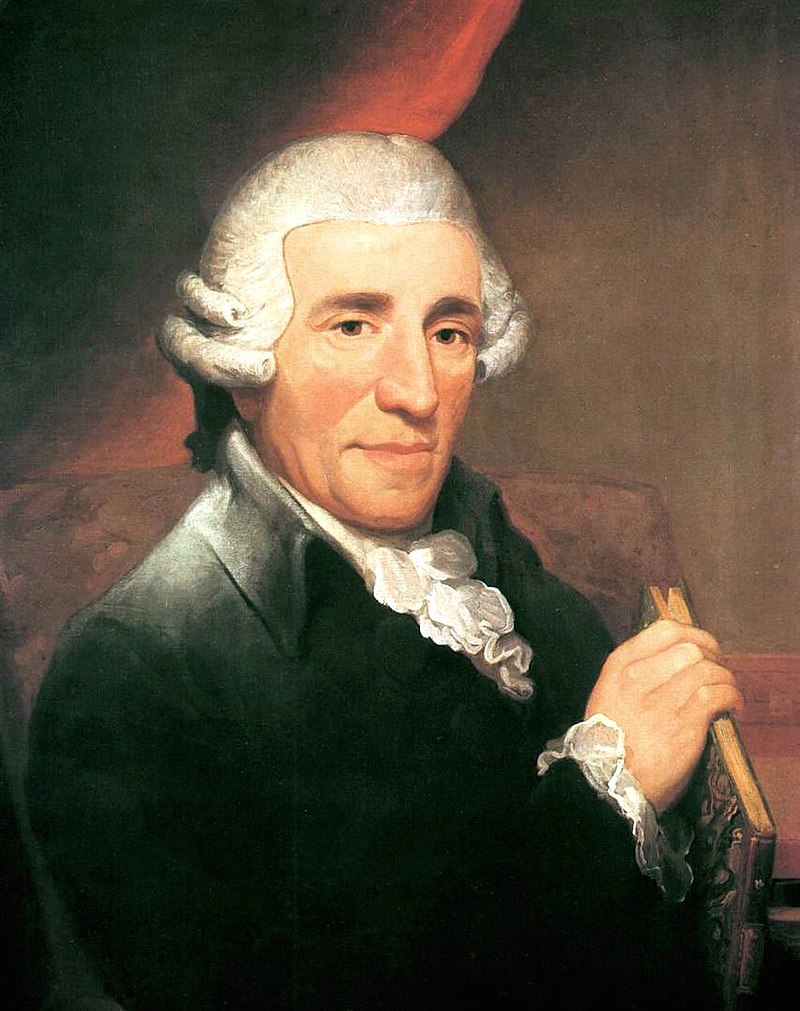Table of Contents
Introduction
In this article, I would like to talk to you most practically and concisely possible about Franz Joseph Haydn, Master of Ludwig Van Beethoven, who with him and Mozart composes the so-called Vienna School. When we talk about this school, we are referring not to a physical building or a place where the three held lessons, but on the contrary, to their entire work, which is sometimes classified even under the name of Viennese Classicism including, in rare cases, also the figure of Franz Schubert. When we talk about Classical Music, we popularly refer to the period in which these four composers lived, although the manuals of History of Music indicate with the phrase Classical Music a much wider segment of time, ranging from the year one thousand to the twentieth century. This makes you understand the importance of Joseph Haydn in the musical culture of the West.

Style or era?
Although popularly we refer to a very specific period, we must note from the outset that some contemporaries of the three progenitors of the Vienna School were very far from their style. Think, for example, of Gluck, who lived around the same time. Another striking example is Gioachino Rossini. With Viennese Style or Viennese Classicism, we will therefore refer more to a style than to an era, which continued, with different rhythms, to be used for much longer and with very different outcomes than those of the period of birth and death of the three composers who constitute the School.
Franz Joseph Haydn And His Time
Haydn’s life (1732-1809) was quite long, certainly more than the average of the people who lived in his time: he was born than J. S. Bach was his contemporary, and died that Beethoven had already composed the Fifth Symphony. During this great period, the History of Music faces profound changes in the musical field. We have already talked about the transition from a private to a public representation of opera in music, with the conception of the new theatres specially used to receive the paying public in the article on Farinelli, the invention of Melodrama, the tonal innovations introduced by the works of J. S. Bach, from the profound renewal introduced in the theaters by Gluck, and we could go on for much longer to list. With Haydn, the novelties are summarized, in particular, styles that will be fundamental for the entire subsequent Western production emerge: the Symphony and the Quartet.
Does Haydn Invent New Styles?
The fact that the founder of the Vienna School has handed down an absolutely original codification of the styles we have talked about, should not make us think that he was the inventor. The style of the Symphony had existed for a long time, but it is with Haydn that the Baroque tradition receives new impetus: for example, he wrote about 108 symphonies in a period ranging from 1759 to 1795; in the former, there is the trace of baroque symphonism, in the latter the influence of the new concerto grosso (which we talked about in an article you find here) can not escape us. In addition to renewing the styles, Haydn also renewed how music was conceived: an example above all is that the habit, until that period, had been not to try the songs that were scheduled for a performance. From Haydn’s letters, on the contrary, we know that he asked the Kapellmeister to rehearse his symphonies at least once before the performance. In short, the modern executive concept was being born: today no one could think of holding a concert by throwing themselves on stage without rehearsing even once, yet in Haydn’s time, as we have already seen in an article that you find here, this was the habit.
The Symphonies
Many of his Symphonies will bear a spurious title, completely imaginative, attributed to them by the publisher: think for example of the symphony of the clock, that of fire or that of the hen. It is difficult to think that Haydn could have based the compositional thoughts turned to his work on such simple subjects. In reality, this tradition of naming a composition to suggest a sort of vulgar guide to listening is not new and will also continue with the figure of Beethoven, to whom a German critic gave the name of Chiaro Di Luna for a composition that had absolutely nothing to do with the subject and that we know from Beethoven’s letters and his biographical events of that period that is not it was conceived, most likely, thinking of the moon. Haydn’s best-known symphonies are those of maturity, which are divided as follows:
| Parisian Symphonies | From n. 82 to n. 87 |
| English Symphonies | From n. 93 to n. 104 |
Below I let you to listen to the integrals of these two catalogings: below you will also find my advice, the book by Giovanni Bietti on the Symphonies of Haydn. If you order it from the banner below, a small percentage of your purchase will go to support this blog:
The Quartets
The Quartet was already in Haydn’s time one of the most widely used chamber forms. Haydn wrote about 83 of them, and with the 6 Quartets Op. 20 we are witnessing a real revolution of a genre so in vogue since the author definitively emancipated himself from the models of Fun that before Haydn had been employed for the Quartet. In the Quartets Op. 33 the traditional Minuet is replaced by a Scherzo. All these transformations and novelties contributed to the definition of a genre that Haydn takes on the definitive form that we know today.
Conclusions
For this article on Franz Joseph Haydn is everything, we will have the opportunity to analyze in detail his scores in the category dedicated to Musical Analysis. Do not forget to follow us by subscribing to the email form to receive a notification to each new publication: see you in tomorrow’s article!
- History Of The Piano – The Fortepiano - July 12, 2022
- Curt Sachs – History Of Organology At a Glance - July 8, 2022
- Giuseppe Verdi – Rigoletto, Il Trovatore, La Traviata - June 29, 2022
